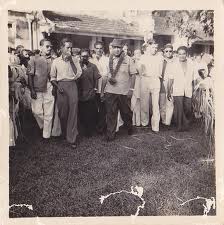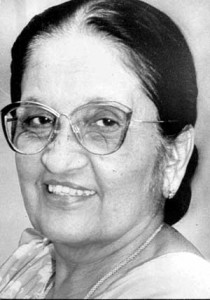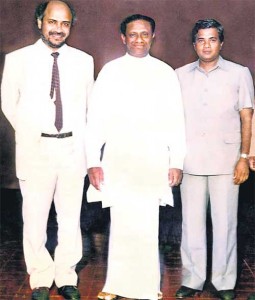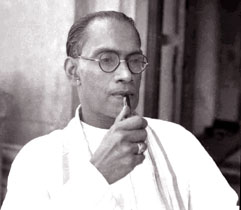Premadasa Exceptionalism and challenges it currently faces…
“The ultimate measure of a man is not where he stands in moments of comfort and convenience, but where he stands at times of challenge and controversy.”- Martin Luther King, Jr.
Public chose Premadasa
A study of the evolution of leadership in the political parties in Sri Lanka would reveal one singular fact. From D S Senanayake to Mahinda Rajapaksa, the torch of 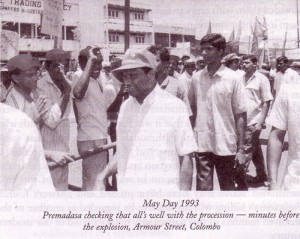 leadership has passed from one elite family to another; not only was the torch passed, the people too voted for a representative of one of these elite families except on one occasion. D S Senanayake nominated his son Dudley Senanayake from his sick bed (source: K M de Silva’s J R Jayewardene of Sri Lanka) to Sir John to SWRD Bandaranaike to Sirimavo Bandaranaike to Chandrika Bandaranaike Kumaranatunga to J R Jayewardene to Ranil Wickramasinghe to Mahinda Rajapaksa, I repeat, except on one occasion when the late J R Jayewardene passed it on to R Premadasa. J R Jayewardene not only passed the coveted mantle of the UNP leadership ( by way of a seemingly democratic fashion), the voting public elected Premadasa in preference to a Kandyan Radala Lady, Mrs. Sirimavo Bandaranaike, as President of Sri Lanka.
leadership has passed from one elite family to another; not only was the torch passed, the people too voted for a representative of one of these elite families except on one occasion. D S Senanayake nominated his son Dudley Senanayake from his sick bed (source: K M de Silva’s J R Jayewardene of Sri Lanka) to Sir John to SWRD Bandaranaike to Sirimavo Bandaranaike to Chandrika Bandaranaike Kumaranatunga to J R Jayewardene to Ranil Wickramasinghe to Mahinda Rajapaksa, I repeat, except on one occasion when the late J R Jayewardene passed it on to R Premadasa. J R Jayewardene not only passed the coveted mantle of the UNP leadership ( by way of a seemingly democratic fashion), the voting public elected Premadasa in preference to a Kandyan Radala Lady, Mrs. Sirimavo Bandaranaike, as President of Sri Lanka.
Personality cults
Sri Lanka, despite being a fully-fledged democracy in terms of the twentieth century usage of the word, has time and again shown patent propensities towards personality cults, may be because in their DNA the people at their core are conscious of the monarchical subjugation in all their history until the arrival of the British and their introduction of democracy and the universal franchise of the European model and other features of liberal governance.
“Attygalle inheritance”
The transferring process that began with D S Senanayake in the fifties and continued into sixties and seventies had its origins in the now famous “Attygalle inheritance”. Let us examine the Attygalle Inheritance:
The Attygalle inheritance – Senanayake/Jayewardene family
D S Senanayake – younger brother of F R who was married to an Attygalle daughter
Dudley Senanayake – D S Senanayake’s son
Sir John Kotalawala – Sir John’s father married the eldest of the Attygalle daughters
J R Jayewardene – JR’s father’s brother married the youngest of Attygalle daughters
Ranil Wickramasinghe – JR’s nephew & DR Wijeyawardena’s grandson
Then we come to the evolution of the SLFP leadership. As a matter of fact, the leadership of the Sri Lanka Freedom Party has never broken away from “family hegemony”. From the Bandaranaike family to the Rajapaksa family it has changed hands only at a very superficial level considering the marginal difference between the social standings of the two families. Mahinda Rajapaksa’s father was close to S W R D Bandaranaike and S W R D’s son Anura had a very intimate alliance and friendship with Mahinda Rajapaksa. Both are low-country elite families, one from the Western province whilst the other is hailing from the Deep South.
Bandaranaike inheritance – Bandaranaike/Rajapaksa family
SWRD Bandaranaike – son of Sir Solomon Dias Bandaranaike
Sirimavo Bandaranaike – S W R D’s wife
Chandrika Bandaranaike – daughter of SWRD & Sirimavo
Mahinda Rajapaksa – one time closest ally of Anura Bandaranaike, and son of DA Rajapaksa, the first MP who crossed over with SWRD in 1951.
Both branches, one UNP and the other SLFP, hail from low country, Sinhala, Govigama families, except Sirimavo whose ancestors are from the “Kandyan” sub sector. In fact she is a Kandyan, Radala Govigama woman. Govigama caste consists just above 50% of Sri Lanka’s population.
Premadasa did not mix
How did R Premadasa fit into this mix? He didn’t. Yet the people, the electors, made the exception. The only leader of the country, outside the two family clans illustrated above, elected by a majority of the people was Ranasinghe Premadasa. However, R Premadasa’s journey was not without any substantial hurdles and obstacles. Was he treated with equality in the fifties and sixties by the United National Party when its leaders were more inclined towards picking their second and third-in-command from the same old school networks? Was he taken seriously when he started attending ’71 April Insurrection court hearings everyday? Was he taken seriously when he built lower-middle class flats in Maligawatte, on a refilled dump yard? Was he taken seriously when he began installing pùttu palam (joint-bridges) with the aid of the State Engineering Corporation knowhow? He accomplished these tasks, at the beneficial end of which were the so-called déclassé or the “common man”, as Parliamentary Secretary to the Local Government Minister, and later as the Cabinet Minister of Local Government in the 1965-1970 UNP government.
Planting the seed
There he planted the seed that would ultimately grow into his indisputable reputation as a friend of the ‘common man’ and the savior of the ‘poor. Coupled with his
image-building, both on and off the traditional media, his personal history as a man who emerged from the “other class”, quite distinct from the established class of elites gave his rise an impetus that could not be challenged by the traditional establishment. While the established class viewed his meteoric rise in popularity and mass-acceptance with utter jealousy and skepticism, in fact R Premadasa paid scant attention to these innuendos and insults that were hurled at him from all corners. He carried on regardless.
“Roof over the head” and “three square meals a day”
If S W R D Bandaranaike identified the one social stigma that the Ceylonese at the time suffered from as the lack of a “place in the sun” for the man who spoke the “swabhasha”, Premadasa read the pulse of the poorest of the poor and identified the need as a “roof over the head” and “three square meals a day”. His massive housing development scheme and “Janasaviya” program were directly geared to serving this duel need. For the recipients of the benefits of these two schemes, freedom of expression, media freedom and Universal Declaration of Human Rights were secondary, if not irrelevant altogether. Premadasa’s uncanny ability to connect with the psyche of the common man propelled him to popularity, especially, if not exclusively, among the general masses.
Ruthlessly-run media apparatus
The extents to which he strode not only to accomplish the Ministerial development tasks physically, but also to take the full political credit via a ruthlessly-run media apparatus set a new trend in campaigns for political promotion. The accolades and publicity which was confined to and monopolized by the Heads of State up to that time, Premadasa too made it his business to avail himself of. He mastered that craft so well and fine-tuned the media operation to almost clockwork precision, later Gamini Dissanayake and Lalith Athulathmudali followed suit. However, handling and benefitting from a friendly media remained Premadasa’s forte.
When one adds supreme oratorical skills, both in and outside Parliament, and extraordinary work ethic to this mix, one encounters an exception to the rule-that is “Premadasa Exceptionalism”.
Who but an assassin can stop a man who possesses all these attributes?
So, it’s not one or two reasons why R Premadasa became acceptable to a very caste-creed-conscious society up to that time. His humble beginnings, his oratorical skills, his boldness in vision, his exemplary work ethic, micro-managing his subordinates and making it his strength instead of a weakness, his self-driven ambition,
his masterful exploitation of the local media, his time-management ability, his simple and spotlessly clean attire, waking up early mornings and seeing the constituents at 4 a.m., and his dogged adherence to a timeline-oriented work plan, all these attributes contributed to his success. Who but an assassin can stop a man who possesses all these attributes?
Advance man
During the 1977 campaign Premadasa used a person as his advance man who now occupies a high post in the state media apparatus. This advance man who had a very powerful, radio-friendly voice went at least half hour prior to Premadasa’s arrival at meetings and set up a pre-tested public address system. He spoke nothing but well about him (now of course his remarks about his old master are sometimes derogatory and disgusting, which expose more about the pupil’s unbecoming demeanor than that about the master). He was in fact called Junior Premadasa by the rest of the media personnel.
Premadasa went on the radio waves to the people on every Saturday or Sunday morning. He left no stone unturned, not only to get where he wanted to, but also to keep himself there and advance further. In other words, he had no comfort zone. His unwillingness to dwell in a comfort zone made two other promising competitors, Gamini Dissanayake and Lalith Athulathmudali follow the same pattern-they too were never content with the status quo.
Comfort zone
Today the UNP’s foremost problem is not Ranil Wickramasinghe or Sajith Premadasa or Karu Jayasuriya, its central adversary is this “comfort zone.”
If the UNP is seriously concerned about securing an election victory in the future, if it is planning and plotting to galvanize the youth of the country to the cause of freedom and justice, it can do it. One way of doing it is by releasing the enormous talent and popularity enjoyed by some of the popular UNP MPs to the villages, the same way J R Jayewardene made use of R Premadasa, Gamini Dissanayake, Lalith athulathmudali, Nissanka Wijeyratne and Ronnie de Mel in 1973-1977 era.
Certainly Mahinda Rajapaksa has been following the Ranasinghe Premadasa pattern of politicking. He is the darling of the Maha Sanga as was R Premadasa, he is loved by the common man, not because he has implemented any poverty alleviation program, but because of the popular perception that he finished the war. That patriotic veneer will take some time to peel off.
Thus the opposition too must not challenge the extraordinary phenomenon called Premadasa Exceptionalism but rather embrace its features and characteristics. For nothing is more valuable and necessary to Sri Lanka now than a strong united and energised opposition.
This is an edited version of the original
